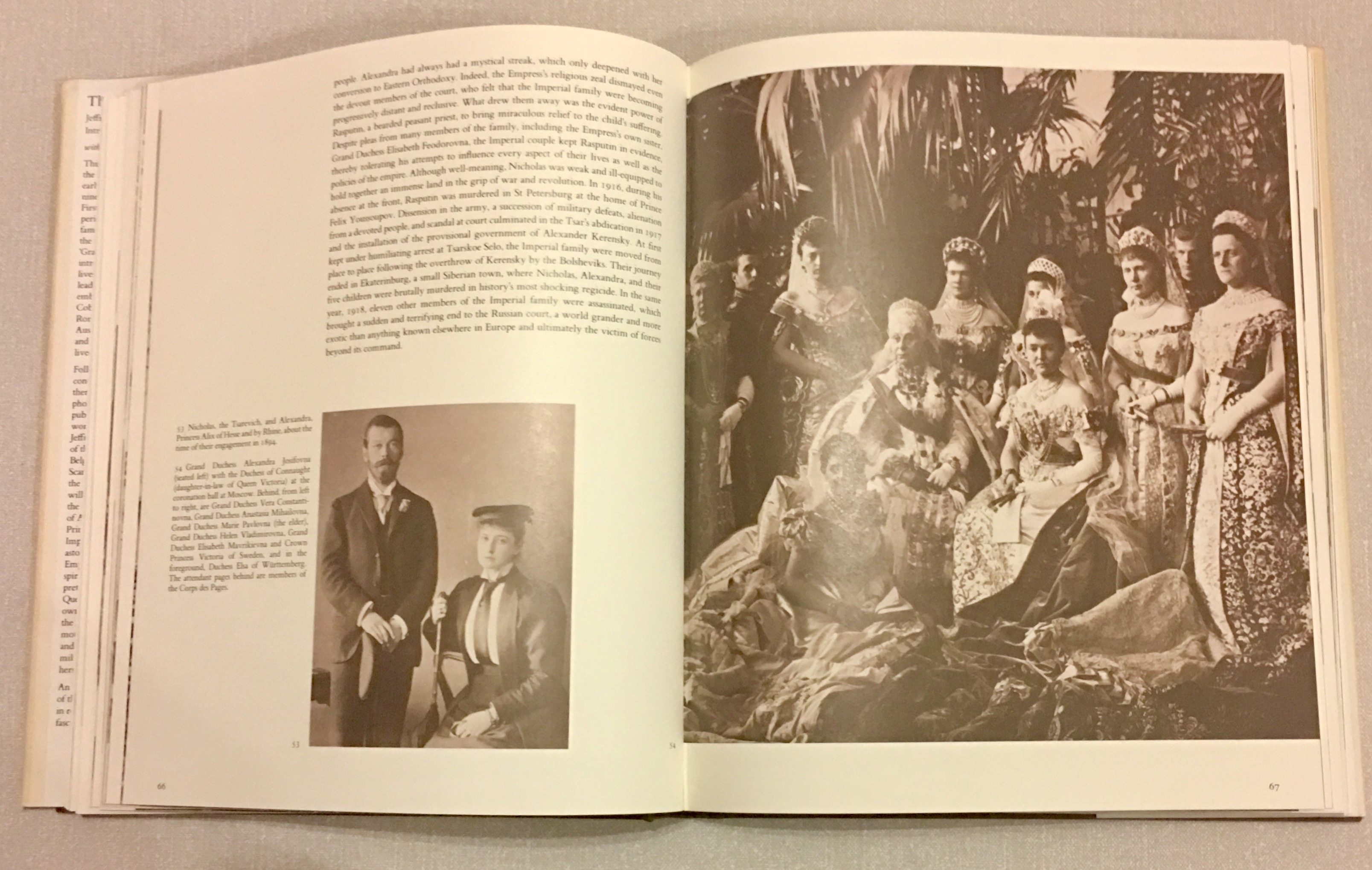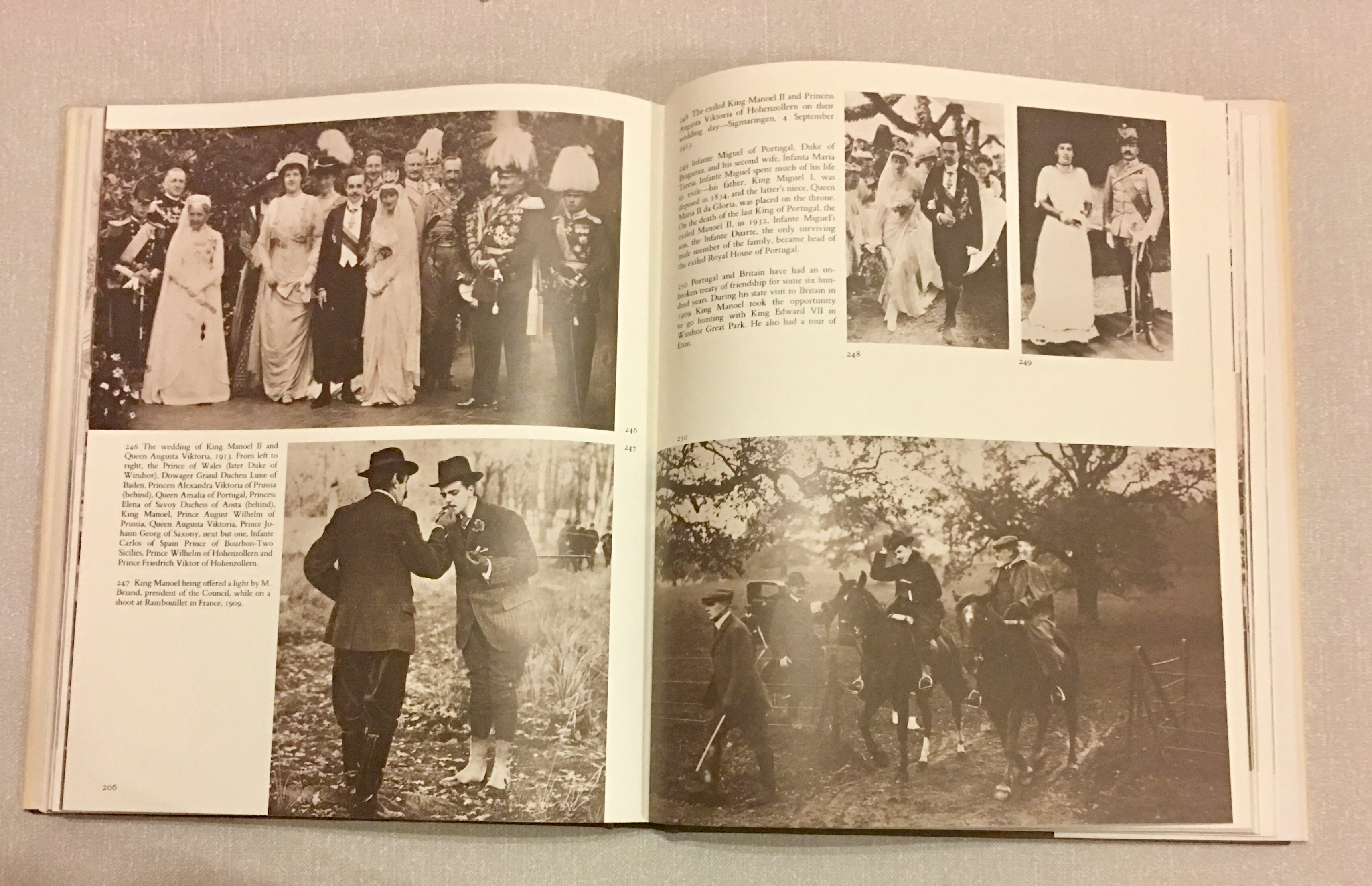The Last Courts of Europe
This rare and massive book is full of captivating old photographs of European royal families (mostly in ball gowns dripping in diamonds and other precious stones) during the Victorian and Edwardian era leading up to the outbreak of the First World War. Many of the featured dynasties were abolished, or forced to abdicate after the war. Those that remained today only hold titular post and ceremonial functions but were stripped of any political power — they all became ‘head of the state’ but not ‘head of the government.’
 I’ve read quite a few war books and familiar with the European royal families (their names always come up in history books), so there’s only one dynasty mentioned in this book that I was not very familiar with. A little background of the European royal history will certainly help and make it a more enjoyable read. The introduction gives a detailed description of only four royal houses, namely: The Saxe-Coburg & Gotha (now called “Windsors of England & Great Britain”); The Hohenzollerns or The House of Brandenburg-Prussia and Imperial Germany; The Romanovs or Russian Imperial Family; and The Hapsburgs or House of Austria. Although the other European royal families were included, sadly, there is no detailed history or commentary on the accompanying photos.
I’ve read quite a few war books and familiar with the European royal families (their names always come up in history books), so there’s only one dynasty mentioned in this book that I was not very familiar with. A little background of the European royal history will certainly help and make it a more enjoyable read. The introduction gives a detailed description of only four royal houses, namely: The Saxe-Coburg & Gotha (now called “Windsors of England & Great Britain”); The Hohenzollerns or The House of Brandenburg-Prussia and Imperial Germany; The Romanovs or Russian Imperial Family; and The Hapsburgs or House of Austria. Although the other European royal families were included, sadly, there is no detailed history or commentary on the accompanying photos.
 A large part of the book are photographs, all in sepia, with captions. It’s interesting how many of them have similar physical features, or have strong resemblance with one another. Evidently, many of them were intermarried, and there is a genealogical table at the end of the book that clearly shows how they are related. In the case of Queen Victoria (of Great Britain) and Prince Albert (of Saxe-Coburg & Gotha), they were first cousins, and they married off all their nine kids to other powerful dynastic families. In the first world war, cousins who were once close friends and allies ended up fighting against one another.
A large part of the book are photographs, all in sepia, with captions. It’s interesting how many of them have similar physical features, or have strong resemblance with one another. Evidently, many of them were intermarried, and there is a genealogical table at the end of the book that clearly shows how they are related. In the case of Queen Victoria (of Great Britain) and Prince Albert (of Saxe-Coburg & Gotha), they were first cousins, and they married off all their nine kids to other powerful dynastic families. In the first world war, cousins who were once close friends and allies ended up fighting against one another.

This book is a highly evocative account of a by-gone era. It made me realise that we will never again see the old rules and orders of the British society, and that the first world war drastically changed Europe, and the world, in far too many ways. If you love social history, royalty, old photos, fashion (all the ball gowns, jewels, and ceremonial accoutrements), genealogies and old-world charm, then this book is well worth getting. But even if you’re not fond of history or royalty, this is an entertaining and a great coffee table book.
